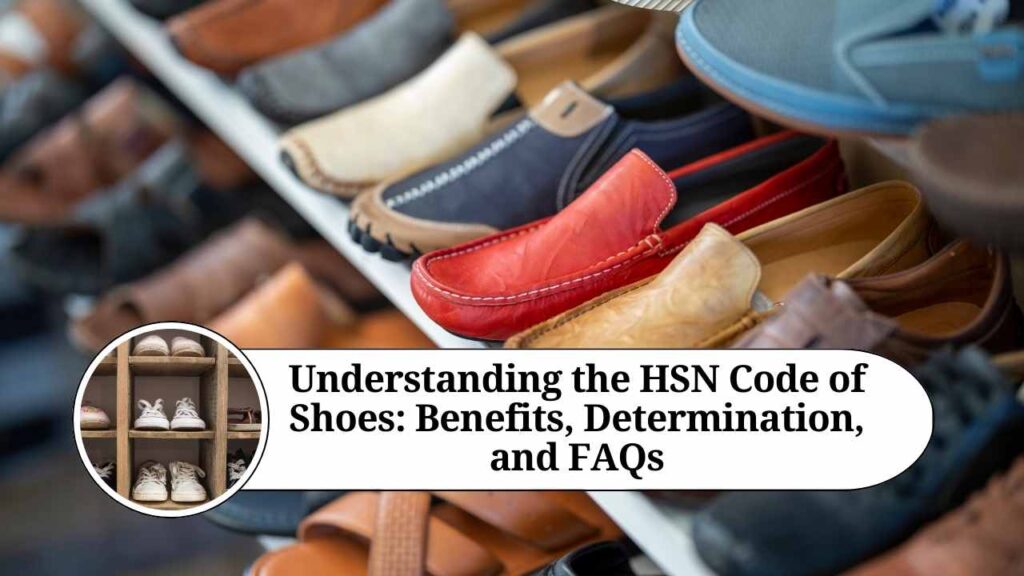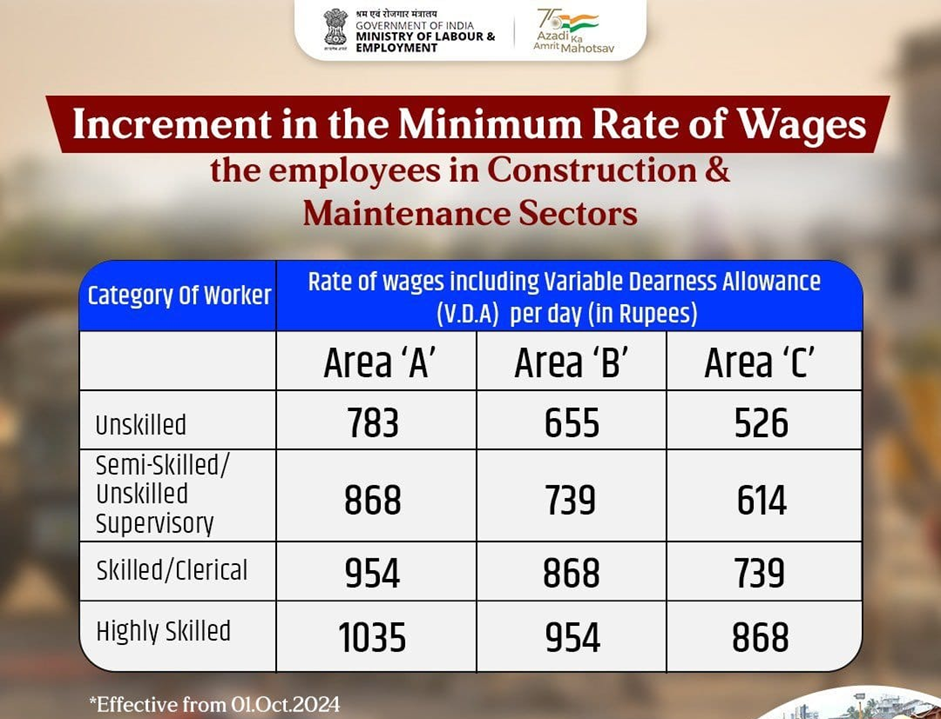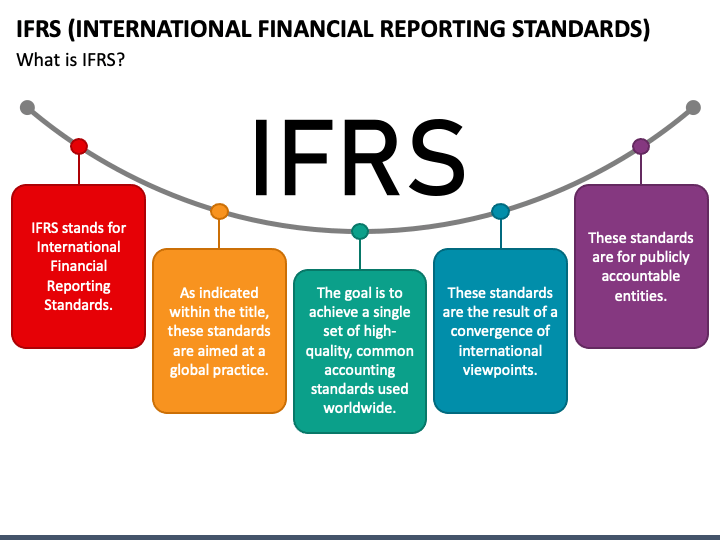GST Rates and HSN Codes on Footwear (Rubber & Plastics) – 2024-25 Guide

With the ever-evolving tax regulations in India, businesses dealing in footwear, especially those made of rubber and plastics, must stay updated on Goods and Services Tax (GST) rates and the Harmonized System of Nomenclature (HSN) codes. Footwear, being an essential commodity, is subject to specific tax rates depending on its material, price, and classification.
This article aims to provide a detailed overview of GST rates and HSN codes for footwear made of rubber and plastics for 2024-25, along with actionable insights. We will also explore how these changes impact businesses and link relevant resources from FileWithCA for further guidance.
Understanding GST on Footwear in India
Contents
- Understanding GST on Footwear in India
- GST Rates for Footwear Made of Rubber and Plastics (2024-25)
- HSN Codes for Footwear Made of Rubber and Plastics
- Explanation of HSN Codes and Their Usage
- GST Compliance for Footwear Businesses
- Impact of GST Rates on the Footwear Industry
- GST Filing and Documentation for Footwear Businesses
- Table: Summary of GST Rates and HSN Codes for Footwear (2024-25)
- Impact of HSN Code Misclassification
- How to Avoid Common GST Mistakes in the Footwear Industry
- Conclusion
GST is categorized into five different slabs: 0%, 5%, 12%, 18%, and 28%. Footwear, depending on its cost and material, primarily falls under the 5%, 12%, and 18% slabs. The GST Council periodically reviews these slabs to account for changes in the industry, consumer behavior, and inflationary trends.
Footwear made of rubber and plastics specifically falls under various HSN codes, which help identify the product for tax purposes. Accurate classification is critical to ensuring that the correct tax rates are applied, helping businesses avoid penalties for misclassification.
GST Rates for Footwear Made of Rubber and Plastics (2024-25)
As per the latest updates for 2024-25, the GST rate on footwear depends on two primary factors:
- The material of the footwear (in this case, rubber or plastics).
- The retail sale price of the footwear.
The table below outlines the latest GST rates applicable to rubber and plastic footwear:
| Price Range | GST Rate | Explanation |
|---|---|---|
| Up to ₹1,000 per pair | 5% | Basic footwear that is affordable for a majority of consumers. |
| Above ₹1,000 per pair | 12% | Mid-range and premium footwear items. |
Footwear made of leather, textiles, or other materials may fall under different slabs, but rubber and plastic-based footwear follows the slabs mentioned above.
HSN Codes for Footwear Made of Rubber and Plastics
To correctly file returns and manage compliance under GST, it’s essential to use the proper HSN code when classifying footwear. HSN codes are crucial for ensuring the right GST rate is applied.
Here are the relevant HSN codes for footwear made of rubber and plastics:
| HSN Code | Description | GST Rate |
|---|---|---|
| 6401 | Waterproof footwear with outer soles and uppers of rubber or plastic | 12% |
| 6402 | Other footwear with outer soles and uppers of rubber or plastic | 12% |
| 6403 | Footwear with outer soles of rubber, plastics, leather, or composition leather and uppers of leather | 18% |
| 6404 | Footwear with outer soles of rubber, plastics, leather, or composition leather and uppers of textile materials | 18% |
Explanation of HSN Codes and Their Usage
- HSN Code 6401: Covers all waterproof footwear, such as gumboots or rain boots, which are typically worn in wet environments.
- HSN Code 6402: Applies to other types of footwear, such as sandals, slippers, and casual shoes made of rubber or plastic.
- HSN Code 6403: Used for footwear made from a combination of materials but with an emphasis on leather.
- HSN Code 6404: Refers to footwear with uppers made from textile materials, where the soles are rubber or plastic.
Knowing the correct HSN code is critical to avoid penalties for incorrect filings. Businesses can refer to resources on HSN classification on FileWithCA for expert assistance on compliance.
GST Compliance for Footwear Businesses
Businesses that deal with footwear must ensure that they follow GST compliance guidelines. This involves registering under GST, filing returns on time, and applying the correct HSN codes during invoicing. Non-compliance can result in penalties and fines, making it essential to remain updated on tax laws.
Steps to Ensure Compliance:
- Register for GST: Footwear businesses must register under GST if their turnover exceeds the prescribed threshold (₹40 lakhs for most businesses).
- Correct Use of HSN Codes: Ensure that all footwear products are classified correctly according to the HSN code.
- Invoicing and Record Keeping: Proper invoicing with the correct GST rates and HSN codes is critical for accurate tax filing.
- Filing GST Returns: GST returns should be filed regularly, based on the business turnover and registration type (monthly, quarterly, or annually).
For detailed guidance on GST registration and return filing, visit FileWithCA where expert consultants offer seamless tax filing services.
Impact of GST Rates on the Footwear Industry
The footwear industry, particularly segments dealing in rubber and plastics, is highly price-sensitive. Changes in GST rates can have a direct impact on both manufacturers and consumers.
1. Effect on Consumers
- Affordable Footwear (under ₹1,000): With a 5% GST rate, affordable rubber and plastic footwear remains within reach of the masses. This encourages consumption, especially in price-sensitive segments.
- Mid-Range to Premium Footwear (above ₹1,000): The 12% GST rate on footwear priced above ₹1,000 pushes the cost slightly higher, but it aligns with other consumer goods in the market. Brands catering to this segment need to factor in this rate during pricing and strategize accordingly to ensure their products remain competitive. While the 12% GST rate may marginally increase the price, businesses can offset this through better product positioning and marketing, appealing to consumers’ desire for quality and durability.
- Effect on Manufacturers and Retailers
For manufacturers and retailers, the GST rates on rubber and plastic footwear play a significant role in pricing strategies. Here’s how it impacts them:
- Increased Compliance Requirements: With different GST rates based on the price point of the footwear, businesses must carefully categorize their products to avoid misclassification. Failure to correctly apply GST rates can lead to penalties, delays in filing, and audits.
- Pricing Strategy: For products priced just over ₹1,000, the jump from 5% to 12% GST could significantly affect the retail price, potentially lowering demand in a price-sensitive market. Retailers and manufacturers may consider offering discounts or restructuring prices to fall under the ₹1,000 threshold to benefit from the 5% GST slab.
- Input Tax Credit (ITC): Manufacturers of footwear benefit from the availability of ITC on inputs used in the production of rubber and plastic footwear. Businesses should optimize their supply chain to maximize ITC claims, reducing the overall GST burden.
For detailed information on managing GST compliance and maximizing ITC, FileWithCA offers expert consultation services to help businesses optimize their tax strategy.
GST Filing and Documentation for Footwear Businesses
Maintaining accurate records and timely filing of GST returns are essential for businesses in the footwear industry. The following steps will help you stay compliant with GST regulations:
1. Invoicing
Ensure that your invoices clearly mention the applicable GST rate, HSN code, and product description. This is especially important for businesses dealing in both low- and high-value footwear, as they need to apply different GST rates based on the sale price.
2. HSN Code on Invoices
From 2021 onwards, businesses with turnover exceeding ₹5 crores are required to mention 6-digit HSN codes on invoices, while those with a turnover below ₹5 crores can use 4-digit HSN codes. For example, if you are selling rubber footwear (HSN Code 6401), ensure that it is correctly mentioned on the invoice to avoid compliance issues.
3. GST Returns
GST returns must be filed regularly depending on the turnover and registration type:
- Monthly Returns: Applicable for businesses with turnover exceeding ₹5 crores.
- Quarterly Returns: Applicable for small businesses under the QRMP (Quarterly Return Monthly Payment) scheme.
Footwear businesses can simplify their GST filing process by using digital tools and seeking expert assistance. For a smooth GST filing experience, consult with FileWithCA, where professionals can handle your tax filing, documentation, and compliance needs.
Table: Summary of GST Rates and HSN Codes for Footwear (2024-25)
| HSN Code | Description | GST Rate |
|---|---|---|
| 6401 | Waterproof footwear with outer soles and uppers of rubber or plastics | 12% |
| 6402 | Other footwear with outer soles and uppers of rubber or plastics | 12% |
| 6403 | Footwear with outer soles of rubber/plastics and uppers of leather | 18% |
| 6404 | Footwear with uppers of textile materials and soles of rubber/plastics | 18% |
Impact of HSN Code Misclassification
Misclassification of HSN codes can lead to various consequences, including:
- Incorrect Tax Rate Application: Using the wrong HSN code can result in incorrect GST rates being applied, leading to underpayment or overpayment of taxes.
- Penalties and Fines: The GST department can levy fines and penalties on businesses that misclassify goods. This can range from financial penalties to delays in claiming ITC or refunds.
- Delays in GST Refunds: Misclassification can lead to rejection or delays in GST refund claims, affecting a business’s cash flow.
To avoid these issues, businesses should ensure that their tax filings are accurate and up-to-date. FileWithCA offers services to help businesses navigate GST classification and filing, ensuring that all regulations are followed correctly.
How to Avoid Common GST Mistakes in the Footwear Industry
- Accurate Product Classification: Double-check the HSN codes and ensure that the correct GST rates are applied based on the material and price of the footwear.
- Regular Updates: The GST rates and HSN codes may change periodically, so it is important to stay updated with the latest notifications from the GST Council.
- Proper Documentation: Maintain proper records of all invoices, GST returns, and ITC claims. Incorrect or incomplete documentation can lead to audits or penalties.
- Seeking Expert Help: Given the complexity of GST regulations, it is always advisable to consult experts for tax-related issues. FileWithCA provides tailored solutions to help businesses stay compliant and avoid costly errors.
Conclusion
GST rates and HSN codes for footwear made of rubber and plastics play a critical role in determining tax liability and compliance for businesses. As we have seen, footwear priced up to ₹1,000 is subject to a lower 5% GST rate, while higher-priced products fall under the 12% category. Furthermore, accurate classification using HSN codes (6401 to 6404) ensures that businesses apply the correct tax rates and avoid penalties for misclassification.
Staying compliant with GST regulations is essential for footwear businesses, and tools such as FileWithCA can help streamline tax filing, manage compliance, and provide expert advice on HSN classification and GST filings. As the tax landscape continues to evolve, staying informed and proactive will ensure that your business remains competitive and compliant in the Indian market.






